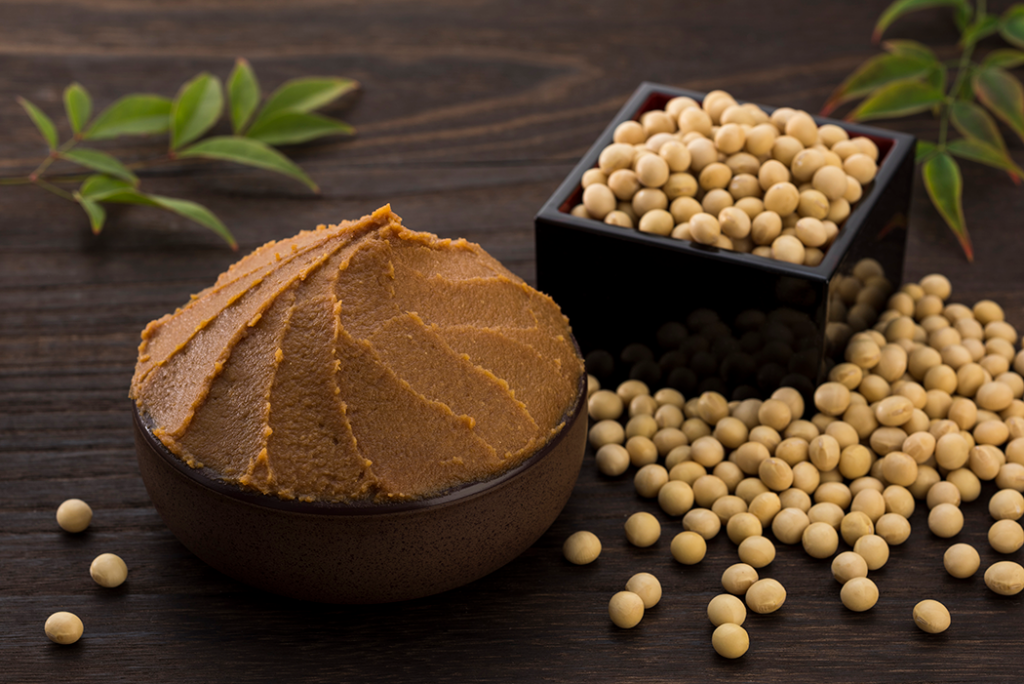Miso: A Japanese culinary staple – Part 1

Miso is a traditional Japanese food produced by fermenting soybeans with salt and koji-mold. Koji-mold is typically a mold made through the fermentation of rice or barley. It is a great addition to your everyday cooking and can be made from the goodness of Ontario soybeans! Typically seen as a savoury paste, miso is added to many dishes including soups, sauces and dressings.
History
Miso has been consumed for over 1000 years as one of the most important seasonings (along with soy sauce) in the Japanese culture. Ancient writings in the year 927 (Heian Period) that miso was given to high-ranking officials as salary, and was considered to be a luxury food item for aristocrats. The very popular dish, miso soup, was introduced during the Kamakura Period (1185 – 1333) and changed the diets of the Japanese people. It was originally created for samurai to dissolve miso onto their hot water for meals. Over the years, the technique to making miso and ingredients for miso soups has evolved with times and the various climates in Japan.
There is also evidence in Japan that points to health benefits such as fatigue relief, cholesterol reduction, healthy intestinal function, improved digestion, anti-aging, and cancer risk reduction!
Ontario soybeans
Today, Ontario exports roughly 53% of the 3 million acres grown annually. We export two types of soybeans: food grade and commodity (GM) soybeans.
Food grade soybeans are specifically grown for the food system to make things like miso, tofu, natto and soy beverages. They are non-GM classified, and are mostly destined to Asian markets like Japan, Malaysia, Vietnam and China.
Commodity soybeans are used for oil production, animal feed and other uses both here in Ontario and around the world.
Ontario soybeans are grown with the quality and care needed to make delectable foods around the world. Foods like miso have a long cultural history and today, soybeans grown by Ontario farmers can be sold to make this dish used by international chefs, foodies and everyday cooks.
Check out Part 2 of our Miso series where we dive into the different types of miso, how to cook them and showcase our favourite miso recipes!



